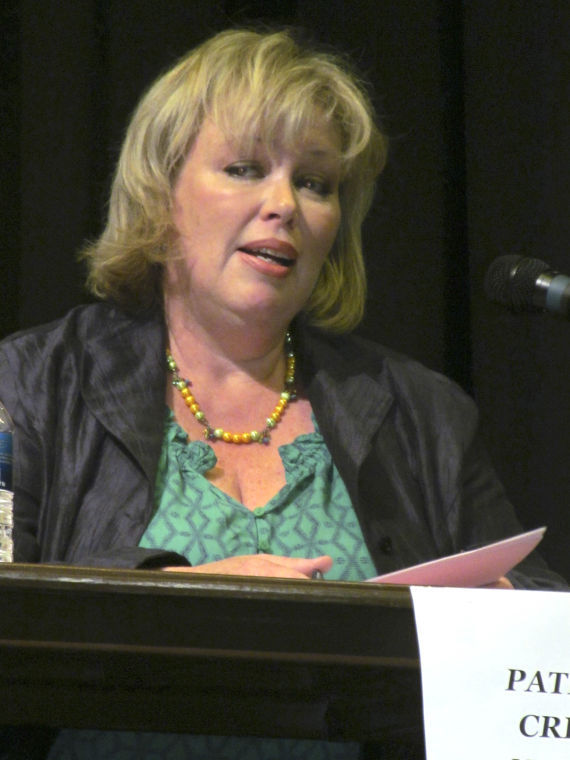
The Mineola Board of Education candidates night on Monday night was marked by a steady stream of sniping between incumbent Irene Parrino and challenger Patricia Navarra, who addressed the issue of district consolidation as though it was still a current question.
Navarra slammed Parrino’s opposition to consolidation of the school district and criticized her for abstaining from voting for the 2011-12 school district budget.
“Abstention from a budget vote without an explanation is an empty argument,” Navarra said.
Parrino said she had objected to including the approximate $2 million for funding the Hampton Street School library project in the budget because it would have been included in the tax cap calculation.
“As a result, I abstained from that vote,” Parrino said.
After their opening remarks, both candidates responded to questions submitted from the audience at the Mineola High School auditorium to the moderator, village Trustee Paul Cusato.
One of the first questions asked whether the candidates’ positions on the consolidation of the school district had changed in the two years since the plan was approved by the school board. The plan included leasing the Cross Street School and the first floor of the Willis Avenue School as the district’s student population had diminished.
“At this point, I don’t think I’d change my position,” said Parrino, who had opposed plans for consolidating district schools along with former board Trustee John McGrath.
She reiterated her opposition to two bond proposals to fund improvements to district schools as part of prospective consolidation options. Parrino said she was aligned with the majority of district residents who voted against those bond proposals before a consolidation plan was finalized by the board.
“If you and Mr. McGrath had a plan, we’re still waiting to hear it,” said Navarra, a co-founder of P.E.A.C.E. – People for Excellence, Affordability and Commitment to Education, an organization that supported the district’s consolidations.
“That wasn’t the question,” Parrino said.
Parrino cited her experience since 1993 as an attorney in private local practice who can see potential problems in contracts as a primary strength. She also pointed to her service as special education attorney for a New York City school district.
“The fact that my opponent teaches at Hofstra doesn’t mean she’s more qualified than I am,” Parrino said.
Navarra has been a professor at Hofstra University for the past 13 years, teaching freshman writing students and courses in the school’s new Irish Studies program. She touted her teaching experience as an asset for serving on the board.
“I know what works in a classroom. I see the challenges that are ahead for all of us,” she said.
Parrino, who has two children attending district elementary schools, said Navarra wouldn’t have children in the district after this year. She has touted herself as the only school board member who will have children in district schools after the current school year, although school board Trustees Artie Barnett and board President Will Hornberger also have children attending district schools.
“There is a correlation between having children in the school district and having an interest in the school district,” Parrino said.
Navarra said she had experience in guiding her two daughters, one graduating high school this year and one in college, through the entire education process. She suggested that she favored a well-rounded approach to education.
“The student who brings home A’s should bring home B’s and pick up an instrument,” she said.
Responding to an audience question, both candidates expressed support for arts education.
“I’d like to see every kid have an instrument as soon as they ask for one,” Navarra said.
“We need to have our students excel at everything, including art and music,” Parrino said.
Responding to a question about whether iPads in the middle school helped improve test scores, their opinions seemed to diverge.
“I believe that tool is useful to help students learn,” Parrino said.
“There are no replacements for fundamentals,” Navarra said, adding she did see a need for iPads to bridge the “socio-economic gap” for students who didn’t have them.
Asked about class sizes, their opinions also differed.
“I don’t think smaller is better. I think you need a critical mass of energy,” Navarra said, citing 22 or 23 students per class as a “magic number.”
Parrino seemed to revisit the recent school closures when she said if class sizes grow, “we might have to open our buildings.”
Asked to clarify her response afterward, she said there might be a need to “increase the size of buildings.”






